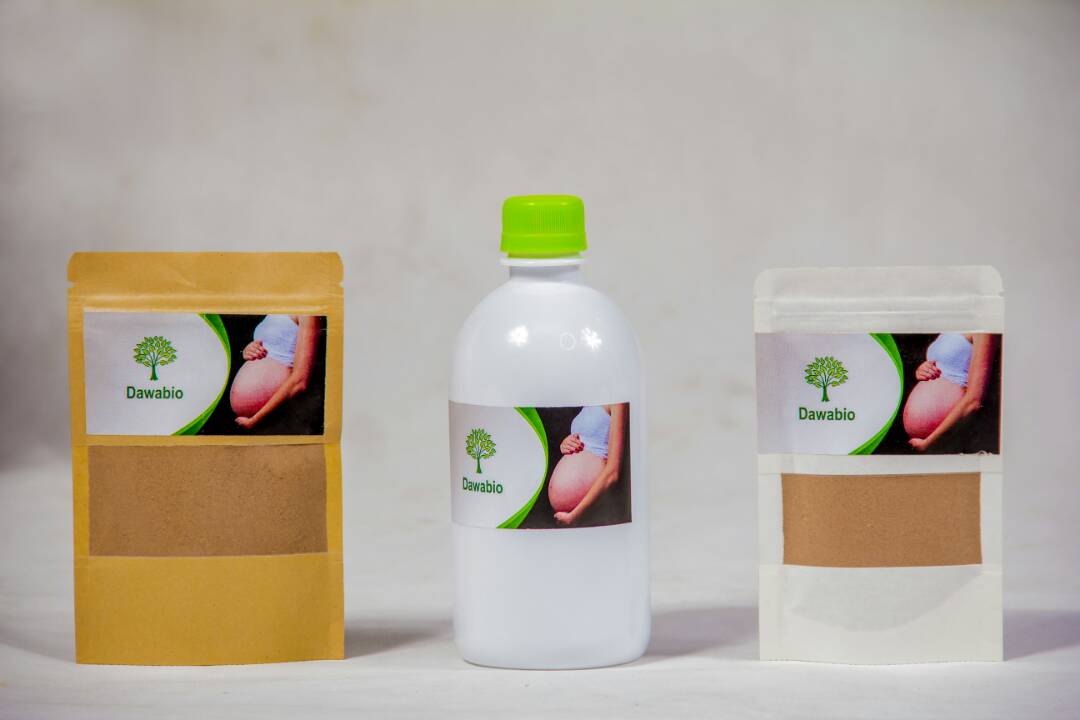Endometriosis is a common and painful disease that affects thousands of women around the world in North America as in Africa and South, other continent and is one of the three main causes of infertility in women.
During a normal menstrual cycle, the lining of your uterus - called the endometrium - begins to thicken before you become pregnant. If you don't get pregnant that month, your body loses its endometrium during your period and the process starts all over again. In endometriosis, for reasons that researchers don't fully understand, tissue very similar to the endometrium begins to grow outside the uterus in various places that it shouldn't. It can appear in or on the ovaries, fallopian tubes, the various structures that support the uterus and the lining of the pelvic cavity. Sometimes it is also found in other places, including the cervix, vagina, rectum, bladder, bowel and elsewhere.
The problem is, this tissue behaves like normal endometrial tissue - it builds up and breaks down with your menstrual cycle - but it can't shed like normal endometrial tissue during your period. As a result, unwanted tissue causes irritation and inflammation. This build-up of tissue can prevent the eggs from leaving the ovaries or from being fertilized by the sperm. It can also leave scars and block the fallopian tubes, preventing the meeting between the egg and the sperm.
Finally, endometriosis problems can be the cause of tubal obstruction. This is because pieces of the uterine lining can end up in the tubes or on the ovaries and block the progression of sperm to the egg, thus preventing fertilization. Dawasanté experts provide you with a natural herbal treatment to unblock your tubes and allow you to quickly get pregnant.
Click on the image below to discover this natural treatment.

However, obstruction of the fallopian tubes is a major cause of female infertility. The blocked fallopian tubes do not allow the egg and sperm to converge, making fertilization impossible. The fallopian tubes are also called oviducts, uterine tubes, and salpines (singular salpinx).
Tubal obstruction
About 20% of female infertility can be attributed to the causes of the tubes. occlusion of the distal tubes (affecting the tip towards the ovary) is usually associated with the formation of hydrosalpinx and is often caused by Chlamydia trachomatis. Pelvic adhesions can be associated with such an infection. In less severe forms, the fimbriae may be clumped and damaged, but some permeability may still be preserved. Tubal obstruction in the middle of the segment may be due to tubal ligation procedures, as this part of the tube is a common target for sterilization procedures. Proximal tubal occlusion can occur after infection, such as. In addition, some tubal sterilization procedures such as the Essure procedure target the part of the tube near the uterus.
A blockage of the uterine tubes can be caused by various disorders, and in some rare cases even be present from birth without causing symptoms until the desire to conceive a child. Obstruction of the fallopian tubes is very often involved in cases of female infertility.
There are various causes of obstruction, or even lesions, of the tubes:
- Pelvic infections;
- Use of an intrauterine device;
- Rupture of the appendix;
- Pelvic or lower abdominal surgery;
- Certain pathologies, for example, tuberculosis;
- Ectopic pregnancy in the fallopian tubes;
- Congenital malformations of the tubes;
- Uterine fibroma ;
- Endometriosis ;
- Asherman's syndrome (lesions or infections during surgery).
We speak of proximal tubal obstruction when the tubal isthmus is involved. It can follow an abortion, miscarriage, cesarean section, pelvic inflammatory disease or the contraceptive pill.
If the distal tubes are blocked, it is the end of the tube on the side of the ovary that is affected. This type of obstruction is often associated with a "hydrosalpinx" which refers to the abnormal presence of a pocket of fluid in the fallopian tube. Usually, hydrosalpinx is caused by infection with Chlamydia trachomatis (sexually transmitted infection).
In other cases, the ovarian fringes, which have an important role in the conduction of the oocyte in the tubes, are damaged or stick together.
Several elements are at the origin of this obstruction
GENITAL INFECTIONS
The majority of the causes of obstruction are infections of the genital tract, especially of the tubes ( salpingitis ) which have occurred in the past. Most of the time, they are due to sexually transmitted diseases (such as chlamydia), which may have gone unnoticed. Nevertheless, they were sufficient to block the proboscis and make it waterproof. This is why it is important for all women to prevent the risk of STDs, in particular through safe sex with occasional partners and regular gynecological monitoring.
MEMBERSHIP
Aside from infections, adhesions, where the two sides of the tube wall stick together, can also be present.
ENDOMETRIOSIS
Endometriosis problems may be the cause of obstruction of the fallopian tubes. This is because pieces of the uterine lining can end up in the tubes or on the ovaries and block the progression of sperm to the egg, thus preventing fertilization.
Most often, a catheter can become blocked due to an infection such as pelvic inflammatory disease (PID). The tubal infertility rate would be 12% after one, 23% after two and 53% after three episodes of PID. The fallopian tubes can also be blocked or disabled by endometritis, infections after childbirth, and intra-abdominal infections, including appendicitis and peritonitis. The formation of adhesions may not block a fallopian tube, but make it dysfunctional by deforming it or separating it from the ovary. It has been reported that women with distal tubal occlusion have a higher rate of HIV infection.
The fallopian tubes can be blocked as a method of birth control. In these situations, the tubes tend to be healthy and, in general, patients requesting the procedure had children. Tubal ligation is considered a permanent procedure.
 First Phytotherapy Boutique Tel: +229 66 23 89 56 FREE DELIVERY ALL OVER THE WORLD
Your Health, Our Priority. Be fearless with us
First Phytotherapy Boutique Tel: +229 66 23 89 56 FREE DELIVERY ALL OVER THE WORLD
Your Health, Our Priority. Be fearless with us